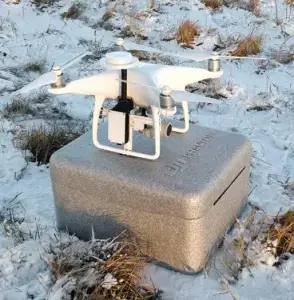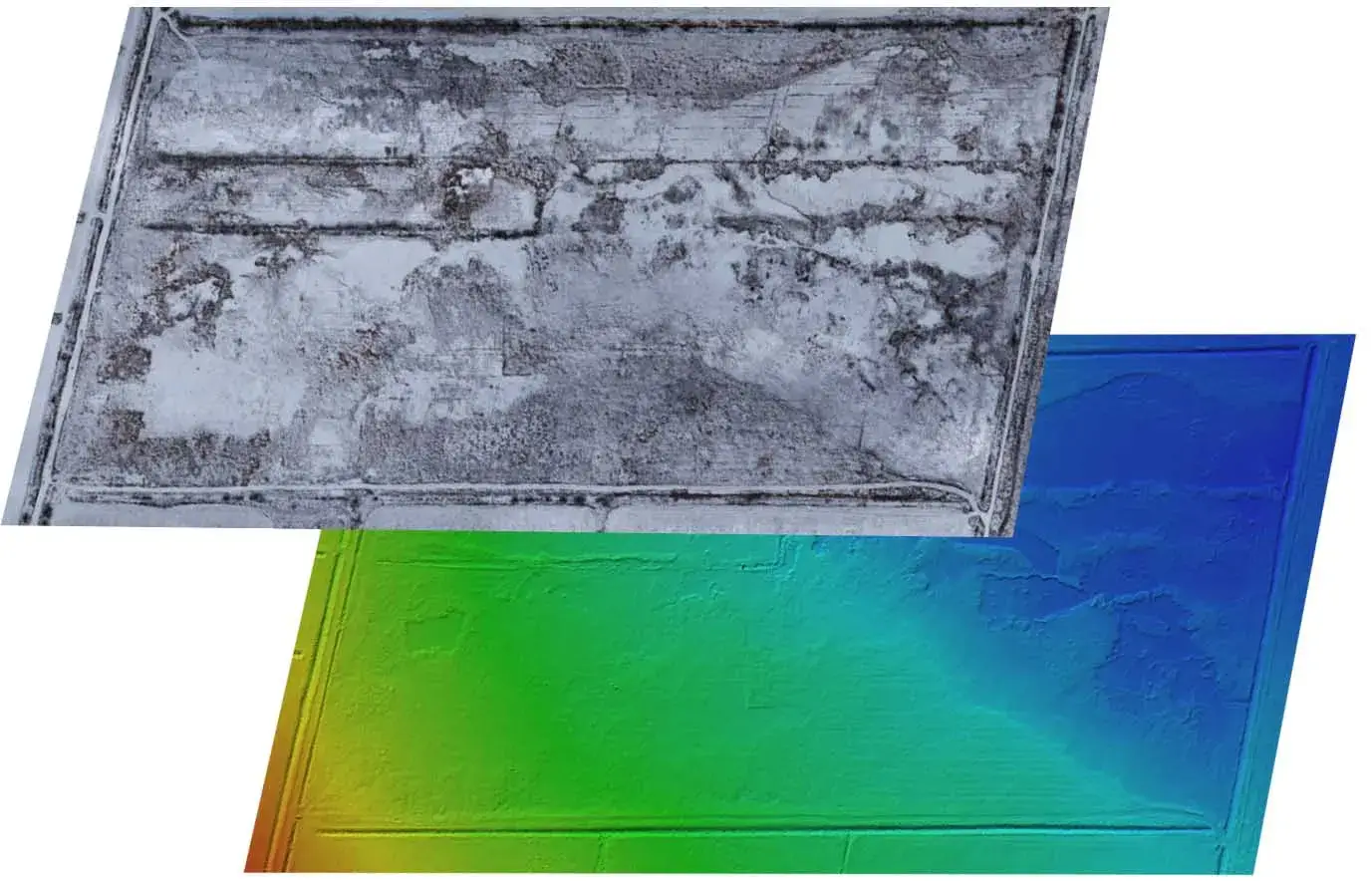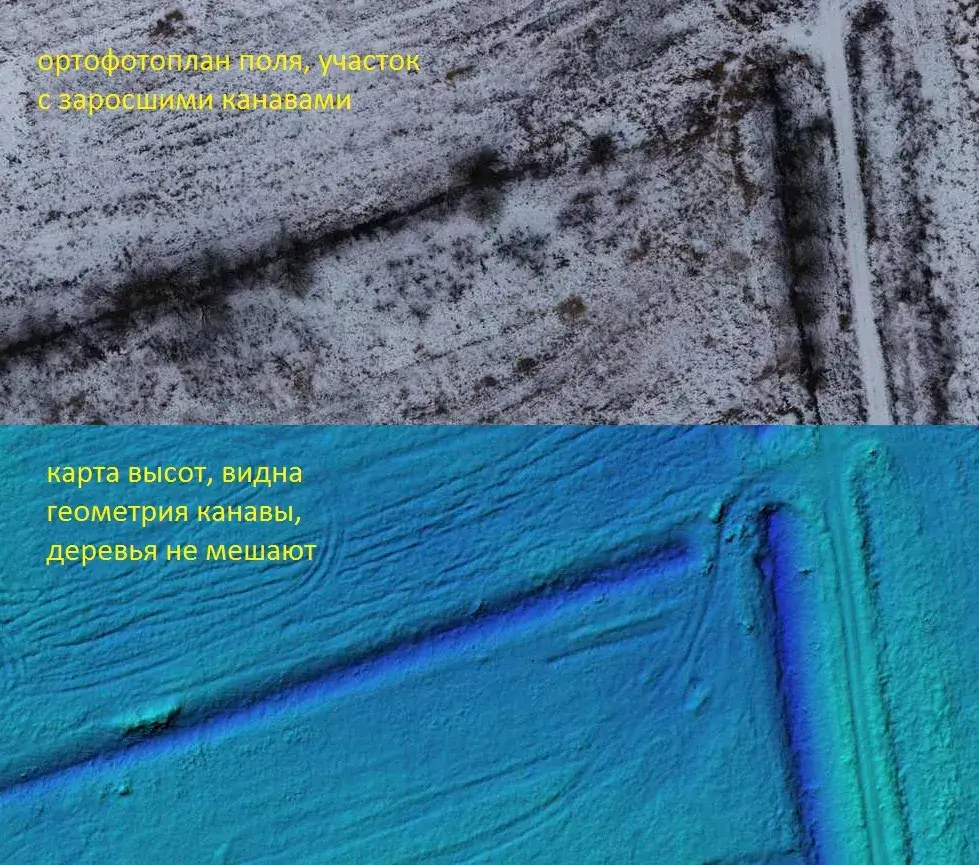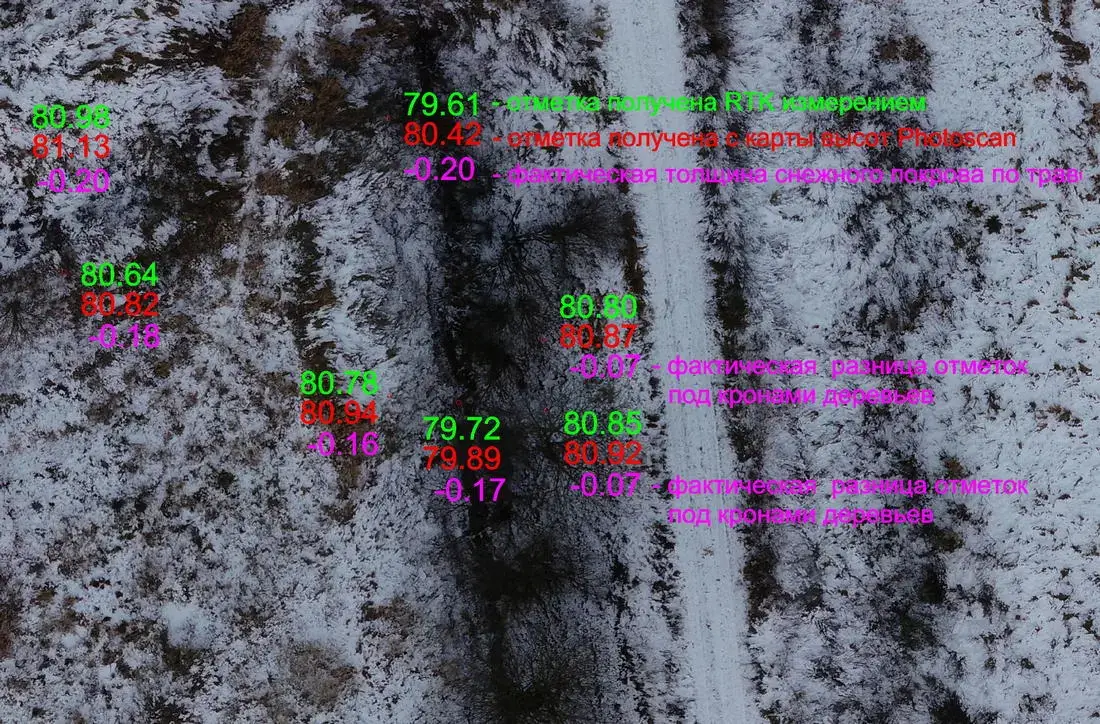UAV surveying in winter
and the elevation points
Why winter surveying is different.
We are often asked about the topographical drone surveys in winter. After all, the main essence of this technology is to obtain the surface model and extract the elevation points remotely. An aircraft or a quadcopter takes photographs of the area while simultaneously recording the geodetic coordinates of the image centers. After that, photogrammetric data processing is performed and an orthomosaic of the surveyed area is produced along with the DEM. The orthomosaic is used to draw a topographic plan, and the height map (DEM) is used to obtain elevation points. Since all data is based on the images, all derivative materials will only have the information that was captured on the images. Thus, two questions are always asked regarding the winter time: how do snow cover and forest affect the final materials?
When it comes to snow, the answer is clear - photogrammetric software builds the surface of the snow, meaning that we can only obtain elevation data from the snow's surface. If the distribution of snow is relatively uniform, we can simply subtract the thickness of the snow cover. However, when it comes to trees, the question is more complex and is related to the algorithms of the photogrammetric software. If you fly not too close to the ground, the program may not "see" small elements, such as branches, tree trunks, and wires, when constructing the digital elevation model. In fact, if a deciduous forest is photographed without leaves in winter, we will only get marks of snow cover on the site instead of trees.
Survey example, described by a survey engineer
The aerial surveying performed with a Phantom 4 Pro PPK drone from https://uav-design.com/ru/

Photogrammetric processing performed using the Agisoft Metashape software.
The site was a snow-covered field with longitudinal and transverse ditches, partially overgrown with willow 2 to 7 meters high. Compared to classical geodetic survey, when topographical survey of a site is carried out by a surveyor, unmanned aerial technologies provide better accuracy for this type of terrain. Why?
Firstly. The accuracy of the terrain is generally higher, since the flight materials allow the automatic reconstruction of a 3D model from a dense point cloud (ranging from 100 thousand to tens of millions of points, depending on processing requirements). On this particular site, the thickness of the snow cover was uniform. It was measured at several control points, and did not exceed the average statistical error of classical surveying. Also, with classical geodesy, the surveyor will take measurements at points with the density of 10-20 meters, or only measure the key points of the relief. Thus, the resulting surface model will be much less detailed, compared to the aerial survey outcome.
Here is an example of an orthomosaic and a DEM of the site:

Secondly. The contours of the boundaries of ditches, cliffs, slopes and other key elements of the relief, visible on a detailed surface, allow one to determine the “fracture line” more accurately and draw it on the topographic plan. In field conditions, the surveyor does not always see a clear boundary of the "relief fracture".

Thirdly. The Agisoft Metashape omits the trees and bushes from the terrain reconstruction, when processing the materials of a winter survey with low forest density (overgrown ditches in this example). In other words, it does not see these elements when creating a height map.
The elevation points obtained using Metashape are almost identical to the control with field measurements in areas of tree vegetation.
